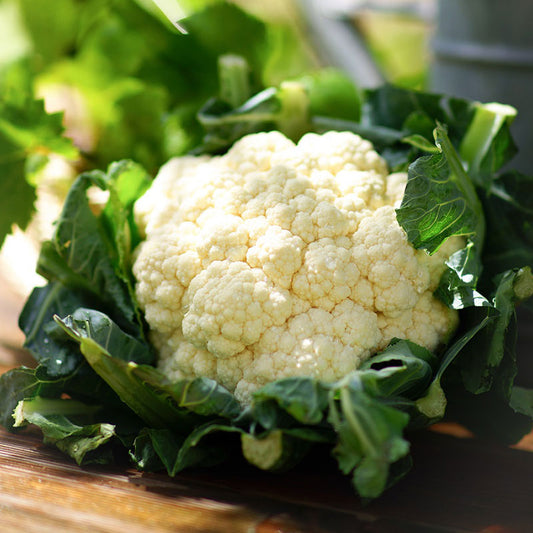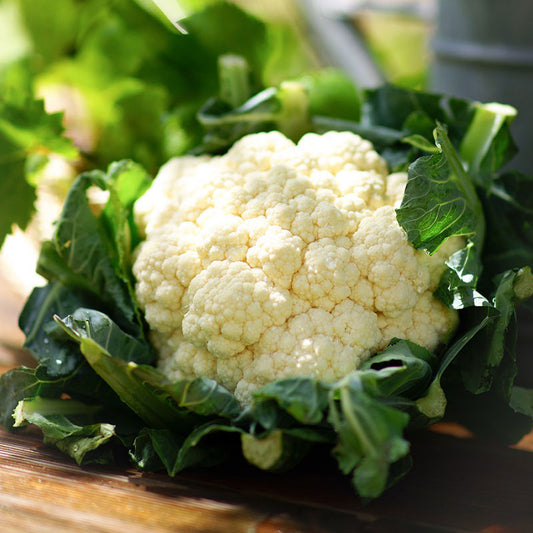-
main-collection-product-grid

Cauliflower Seeds - Snowball Y Improved
Immaculately white, frost tolerantCauliflower Seeds - Snowball Y Improved
Immaculately white, frost tolerantRegular price As Low As $4.49Regular priceUnit price per -
main-collection-product-grid

Cauliflower Seeds (Organic) - Snowball Y Improved
Large, delicious heads high in Vitamin CCauliflower Seeds (Organic) - Snowball Y Improved
Large, delicious heads high in Vitamin CRegular price As Low As $6.29Regular priceUnit price per
About our heirloom cauliflower seeds
- Annual vegetable similar to broccoli
- Lives through freezing temperatures
- Prefers full sun exposure
- Can be refrigerated or frozen after harvest
Heirloom cauliflower has been making strenuous efforts to improve its public image. Many people are discovering how versatile this pale vegetable is, as it was traditionally considered bland and dull. Heirloom cauliflower rice, perhaps? It's possible to make pizza out of cauliflower? WHAT?! Grow your own and try out the many different ways this Brassica can be used.
Plan on transplanting heirloom cauliflower seeds from indoors to outside two to four weeks before the last spring frost or six to eight weeks before the last fall frost. Start your seeds four to five weeks before transplanting.
Heirloom cauliflower seeds prefer soil that is fertile, well-drained, and moist, with lots of organic matter. The soil pH should be in the range of 6.5 to 6.8. Plant seeds in a sunny location where they will receive at least six hours of direct sunlight each day.
Water thoroughly after planting seeds approximately 1/2 inch deep. Wrap the seeds in plastic wrap until they sprout. Remove the plastic from the seeds and place them under grow lights for 14 to 16 hours each day. Plants should be carefully hardened off and placed outside for one hour on the first day, with additional time added each day for around two weeks. After that, transplant outside.
In addition to typical rainfall, heirloom cauliflower plants require around two inches of water every week. Three to four weeks after transplanting, use a nitrogen-rich fertilizer. Following 50 to 100 days after sowing, most types will be ready to harvest. The heads should be compact, white, and firm, with a diameter of six to eight inches. To harvest, use a large knife to chop the plant's head off, leaving some leaves surrounding it to protect it. Heirloom cauliflowers can be refrigerated in a plastic bag for up to one week.
The heirloom cauliflower head will separate if left unharvested, much like a budding flower. The flower buds of the cauliflower plant are the part that we usually consume. To be more technical, the head of a cauliflower is a curd, which is actually just a cluster of immature flower buds.
For more information about planting, growing, and caring for heirloom cauliflower seed, see the Cauliflower Seeds Planting Guide.

